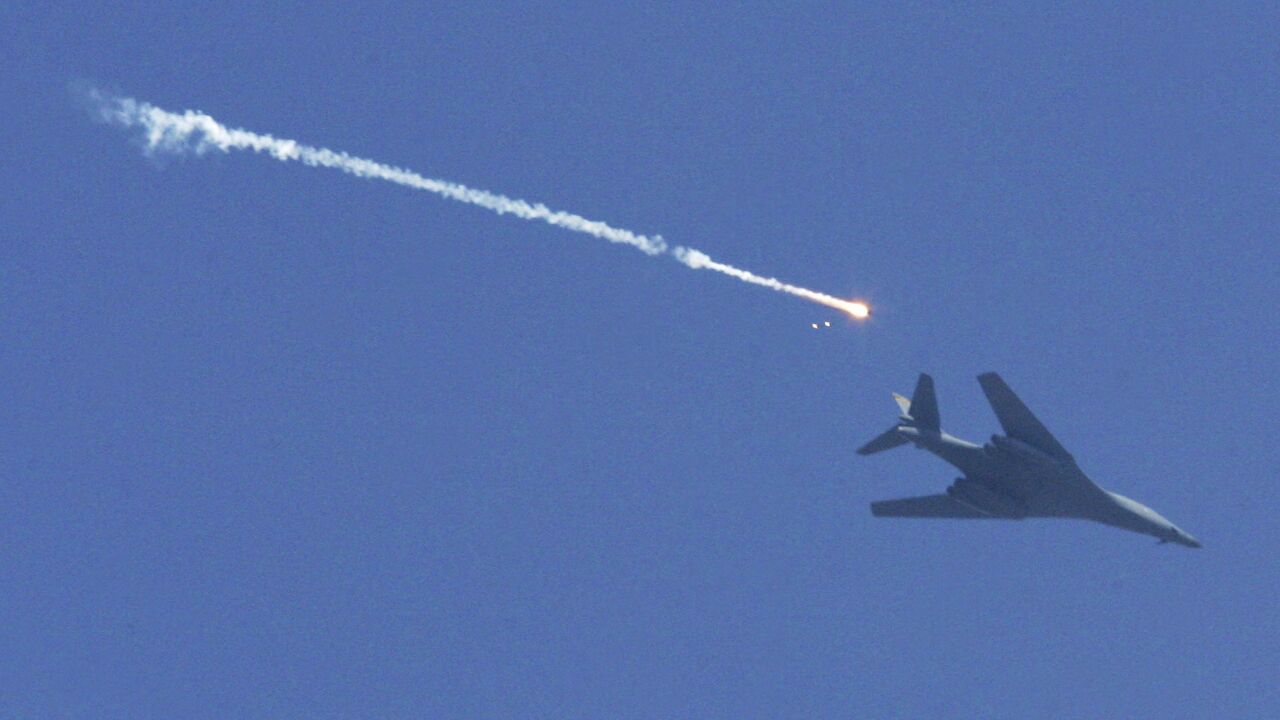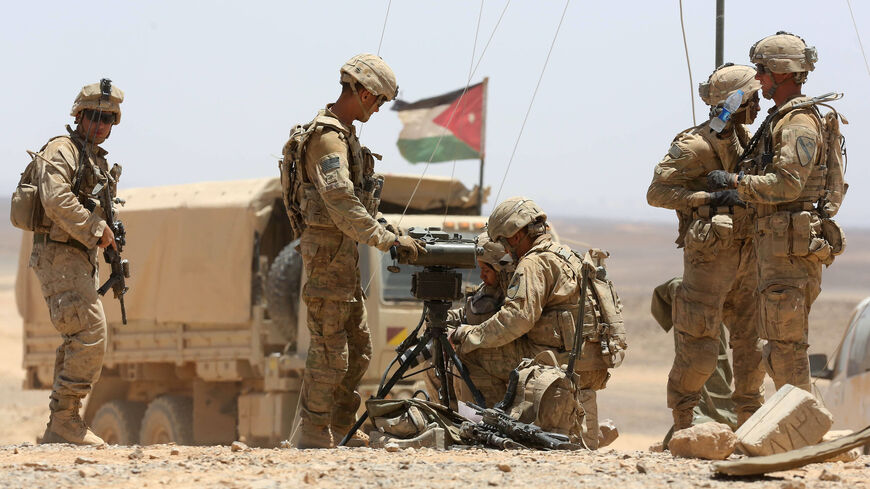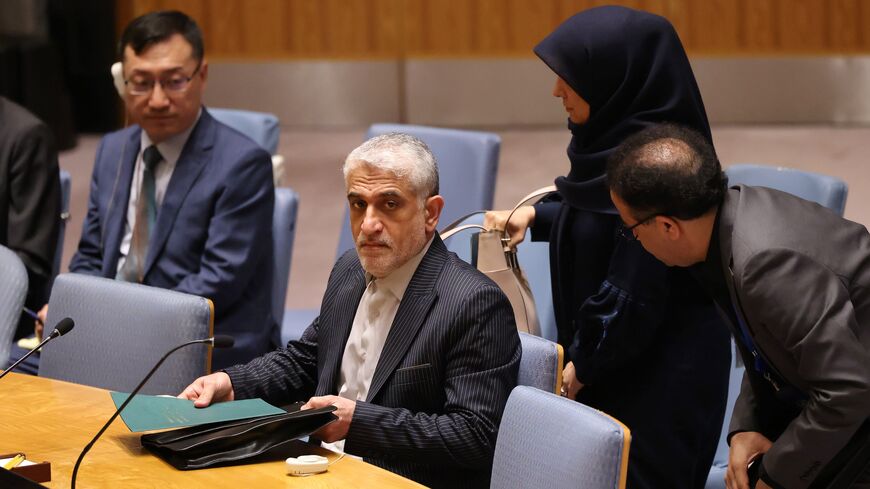US strikes Iran-affiliated targets in Syria & Iraq in response to Jordan attack
US launches unprecedented volley in conflict with Iran-backed groups, hitting more than 85 IRGC and militia targets in Iraq and Syria.

WASHINGTON — B-1B bombers led airstrikes on seven military sites across Iraq and Syria on Friday night in what US officials described as a first wave of retaliation against Iran-backed militias for a drone attack that killed three American soldiers at a base in Jordan last Sunday.
The US military said the bombers and accompanying fighter aircraft dropped more than 125 precision munitions on more than 85 targets, including “command-and-control operations centers, intelligence centers, rockets, and missiles, and unmanned aerial vehicle storages, and logistics and munition supply chain facilities” used by Iran's Islamic Revolutionary Guard Corps (IRGC) and the militias it backs.
The scope of the US retaliation against the militia and IRGC sites was unprecedented, and came after US troop positions have endured more than 160 rocket and drone attacks since mid-October.
The militias, styling themselves as the “Islamic Resistance in Iraq,” have billed their barrages as retribution for Israel’s war in the Gaza Strip.
In a statement announcing the US strikes on Friday evening, President Joe Biden said there was more to come.
"Our response began today. It will continue at times and places of our choosing," he added.
While no specific militia claimed credit for the attack on the Jan. 28 drone attack on the Tower 22 base in Jordan, Pentagon officials this week said it bore “the footprints” of Kataib Hezbollah.
The White House later attributed the lethal incident to the self-styled "Islamic Resistance" movement, an umbrella term for Iran-backed militias which generally espouse hostility towards Israel and the US troop presence in Iraq.
Militias trained, funded and armed by the IRGC from Yemen to Iraq and Syria have posed a vexing problem for Pentagon planners seeking to deter attacks on US bases across the Middle East and other sensitive sites in recent years.
Biden’s authorization of strikes on IRGC-linked facilities in Syria and Iraq, rather than in Iran, underscored his administration’s attempt to strike a delicate balance between disrupting future attacks without triggering a catalytic cycle of retaliation.
“The United States does not seek conflict in the Middle East or anywhere else in the world,” the president said in a statement following the strikes. “But let all those who might seek to do us harm know this: If you harm an American, we will respond.”
US military analysts were still assessing the damage inflicted by the strikes in the immediate aftermath on Friday night.
White House National Security Council coordinator John Kirby said the target locations — three in Iraq and four in Syria — were chosen “based on a clear irrefutable evidence that they were connected to attacks on US personnel in the region,” without offering further evidence.
Officials said the sites had been carefully selected to avoid civilian harm, but acknowledged that IRGC or militia personnel could plausibly have been killed.
“Initial indications are that we hit exactly what we meant to hit,” US Army Lt. Gen. Douglas Simms, the Joint Staff’s operations director, told reporters following the strikes.
“We made these strikes tonight with an idea that there there would likely be casualties associated with people inside those facilities,” Simms said.
Gen. Alex Grynkewich, the top US Air Force commander in the Middle East who oversaw the strikes from the combined air operations center at al-Udeid Air Base in Qatar, billed the strikes as “defensive” in a statement.
Neither Kirby nor Simms would not say when asked whether cyber attacks had been deployed in the initial US retaliation.
Iraqi armed forces spokesperson Maj. Gen. Yehia Rasool slammed the US strikes on Friday a “violation of Iraq’s sovereignty.” Kirby said US officials informed the Iraqi government ahead of the strikes.
Following a series of meetings with top national security advisors early this week, Biden on Wednesday said he had come to a decision on the response, which administration officials have since repeatedly signaled will come in phases.
Kirby said the first action taken in response to the Tower 22 attack wouldn't "be the last" seen from the US.
"We have called on the Iranian proxy groups to stop their attacks. They have not, and so we will respond in a time and manner of our choosing,” Pentagon Press Secretary US Air Force Maj. Gen. Patrick Ryder vowed on Tuesday.
In an apparent last-ditch attempt to save face, Kataib Hezbollah announced on Tuesday it was suspending attacks against US forces in Iraq and Syria, implying Iran was not privy to its attacks.
The unusual statement followed a visit by Ismail Qaani, the commander of the Quds Force of Iran's Islamic Revolutionary Guard Corps (IRGC), to Baghdad on Monday.
But Iran-backed militias were not united in their messaging in the lead-up to the US strikes on Friday.
Harakat al-Nujaba, another IRGC-armed group, announced Friday it would continue its attacks until Israel halts its war in Gaza and the roughly 2,500 US troops in Iraq leave the country.
The IRGC’s top commander Gen. Hossein Salami on Wednesday warned his side would “not leave any threat unanswered” but qualified that by saying Iran was not seeking war with the United States.
“We are also neither afraid of, nor running away from war,” Salami said.
Iran’s government denied any involvement in the drone attack on Tower 22, a claim Biden administration officials this week dismissed as irrelevant.
“I do hold them responsible in the sense that they're supplying the weapons to the people who did it,” Biden said on Tuesday.
US officials speaking not for attribution in recent weeks have dismissed the militias’ statements claiming that they will halt their attacks if Israel ends its war in Gaza.
Yet the military’s opening volley of retaliation on Friday came amid a parallel diplomatic effort led by the United States, Qatar and Egypt to arrange at least a six-week halt to the Israel-Hamas war.
Ahead of the strikes, Reuters reported that key IRGC officers had begun leaving Syria and Iraq, raising questions as to whether the delayed US response and leaks to the press had been deliberate in an attempt to minimize the risk of escalation.
US officials avoided giving direct answers to questions from the press as to whether the administration had deliberately telegraphed the nature and timing of the coming US retaliation in order to avoid Iranian casualties.
Kirby on Friday said there had been no back-channel communication between US and Iranian officials since the lethal Jan. 28 drone attack at Tower 22.
US officials have declined to detail future locations or intended targets of coming strikes, but have signaled they are imminent regardless of the militias’ and Iran’s response.
Asked by Al-Monitor during a press briefing on Thursday why the US intended to respond in phases, rather than a single decisive retaliation, Pentagon chief Lloyd Austin replied, "I don't think the adversaries are of a ‘one-and-done’ mindset.”
“They have a lot of capability,” Austin said. “I have a lot more.”






